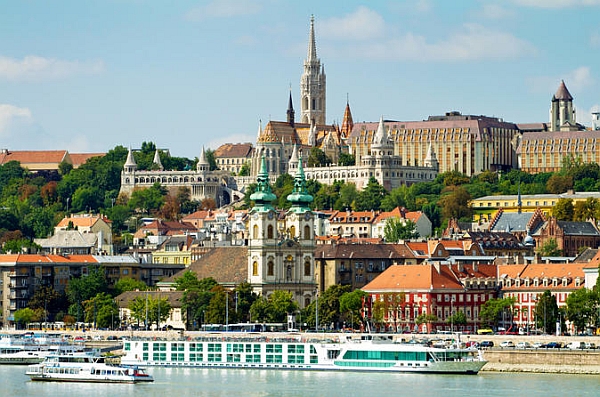Budapest, being the capital, is the largest city in Hungary with 1.7 million people within the city proper. However, if the greater Budapest metropolitan area is included, this figure climbs to 3.27 million inhabitants. The metropolis is separated into 23 districts, 6 in Buda, 16 in Pest, and one consisting of Csepel Island making it seem like an immense city at first glance, but the majority of districts are residential and not of interest to most travelers.

Budapest officially became one city with the unification of Buda, Pest, and Óbuda on November 17, 1873. One contributing factor was the building of the Széchenyi lánchíd, commonly known as the Chain Bridge. This was the first connecting bridge over the Danube in Budapest. It was named for Count Széchenyi who was a major financial supporter of the project. The story goes that Széchenyi was on the Pest side of the river when he received word that his father was on his deathbed. Due to a major storm, Széchenyi was unable to get a boat to traverse the river for a week, thus missing seeing his father one last time before he died. He vowed this would never occur again. Not only did the bridge have practical implications, but it also aided the cultural and economic advancements of the people.
Interestingly, William Tierney Clark, the engineer who designed the Marlow Bridge across the river Thames in Marlow, England designed this bridge as well. Both bridges are similar in design. Construction of the bridge was supervised by a Scottish engineer, Adam Clark, though they were not related. On the Buda side of the bridge is a turnabout named Clark Adam tér. The bridge officially opened in 1849. Its center span of 202m (660 ft) was the largest in the world at that time.
On the ends of the bridge are sculptures of lions, added in 1852, producing a humorous folk legend. When a group of schoolchildren were brought to view the lions and the bridge, the sculptor who was in attendance bragged about the lifelike details of his lions. One child pointed out that the lions did not have tongues. The sculptor was upset over this missing detail; he jumped to his death into the Danube. Of course, this is only a legend as the sculptor lived well into old age.
Budapest is also home to the oldest metro (underground) line in continental Europe, the second oldest in the world after London.
It has the largest Parliament building in Europe, again being beaten only by Westminster in London.
The Dohány Synagogue is the second-largest working synagogue in the world after Temple Emanu-El in New York City.
Budapest has the worlds largest cave system of thermal water with 80 geothermal springs running below it.
Széchenyi Thermal is the largest medicinal bath complex in Europe.
Modern-day Budapest is difficult to encapsulate; there are daily changes with international designer stores opening on Andrássy út.